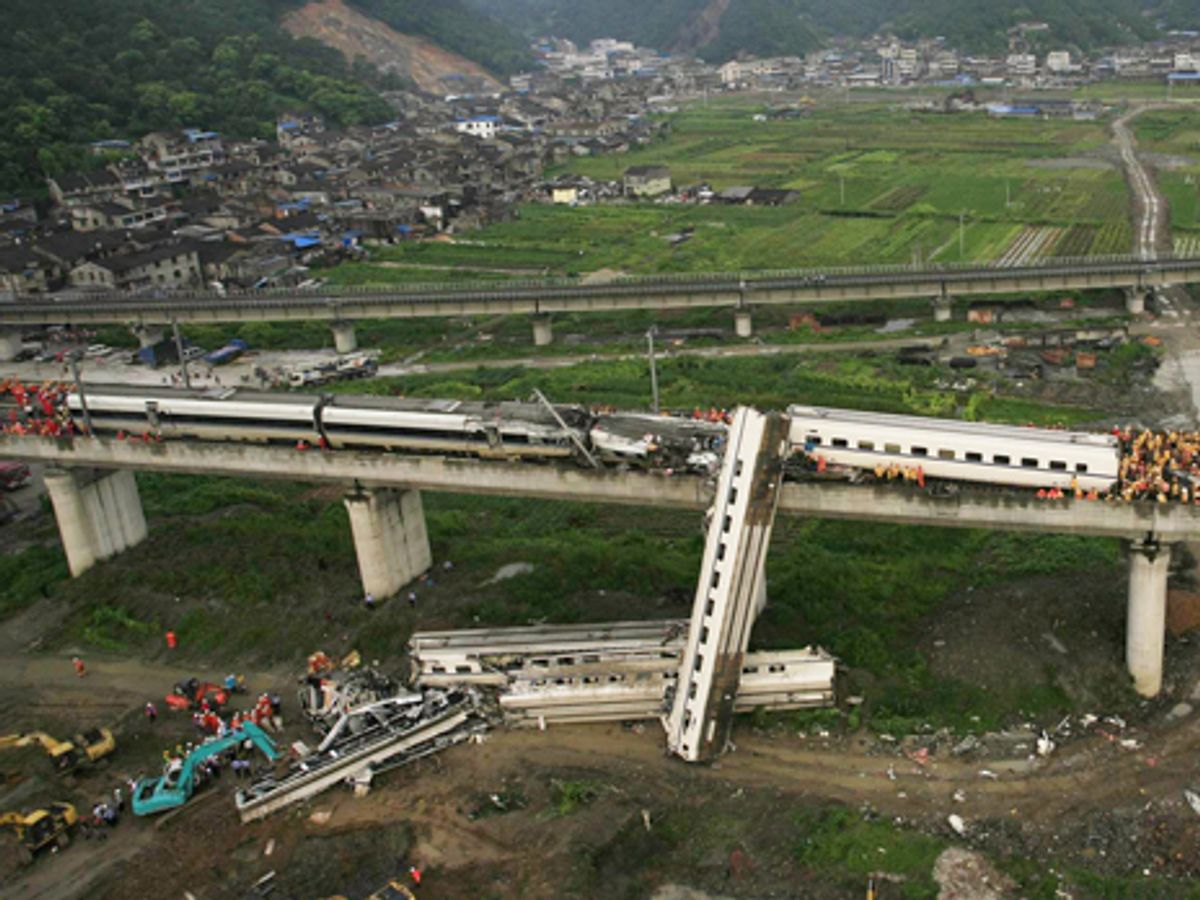The hand-wringing over China's high-speed train wreck last month may have just begun if the government's current explanation for the crash bears out. At present, official fingers are pointing to a failure in the trains' signaling system. The firm that installed them, it now appears, provides similar equipment for the nuclear reactors that China is building just as fast as it is adding rail lines.
Beijing-based Hollysys Automation Technologies provided the control systems for the two high-speed trains wrecked in the July 23rd accident near the southern city of Wenzhou, according to a report late last month by business news site iChinaStock. In a follow-up report the site says Newport Beach, CA-based investment banking firm Roth Capital had downgraded Hollysys's stock, arguing that "fallout over the tragic incident could have far-reaching policy implications and affect the overall railway industry."
As of last year China had over 6500 kilometers of high-speed rail, more than any other country, and plans were to double that by next year. But Roth Capital argues that the crash and the removal of China's railways minister, accused of corruption this spring, are likely to delay ongoing high speed rail projects and thus hurt Hollysys revenues.
The disquieting link to China's nuclear expansions appears as an aside in iChinaStock's followup report. Hollysys is the "only certified domestic automation control systems provider to the nuclear industry in China," according to iChinaStock. China's nuclear industry shares two dangerous characteristics with its high-speed rail network: explosive expansion and strong whiffs of corruption.
According to a recent statement by China's Ministry of Environmental Protection the country had 13 reactors operating as of June, 28 more under construction, and 100 expected to be generating power by 2020. And, as with the rail network, a leading nuclear official was recently sacked under suspicion of corruption. Kang Rixin, head of the state-owned nuclear plant operator China National Nuclear Corporation, was sentenced to life in prison last November for accepting 6.6 million Yuan (US $1 million) in bribes from an equipment vendor.
The stakes, however, are incomparable. Last month's train crash killed an estimated 40 people and dented China's national pride. An accident in a Chinese reactor could be truly catastrophic. Millions could be injured or killed and, in the process, China could lose a key alternative to heavy dependence on coal.
Let's hope that China's leaders recognize the threats and insist on a more transparent approach to nuclear safety than has been exhibited with the rail crash. Official reports first blamed lightning; the burial of a twisted train car during the rescue operations was widely interpreted as a clumsy attempt to hide evidence; and state censors ordered Chinese publications to toe the rail ministry's lines.
In a hopeful sign for safety, many news outlets refused.
Peter Fairley has been tracking energy technologies and their environmental implications globally for over two decades, charting engineering and policy innovations that could slash dependence on fossil fuels and the political forces fighting them. He has been a Contributing Editor with IEEE Spectrum since 2003.



